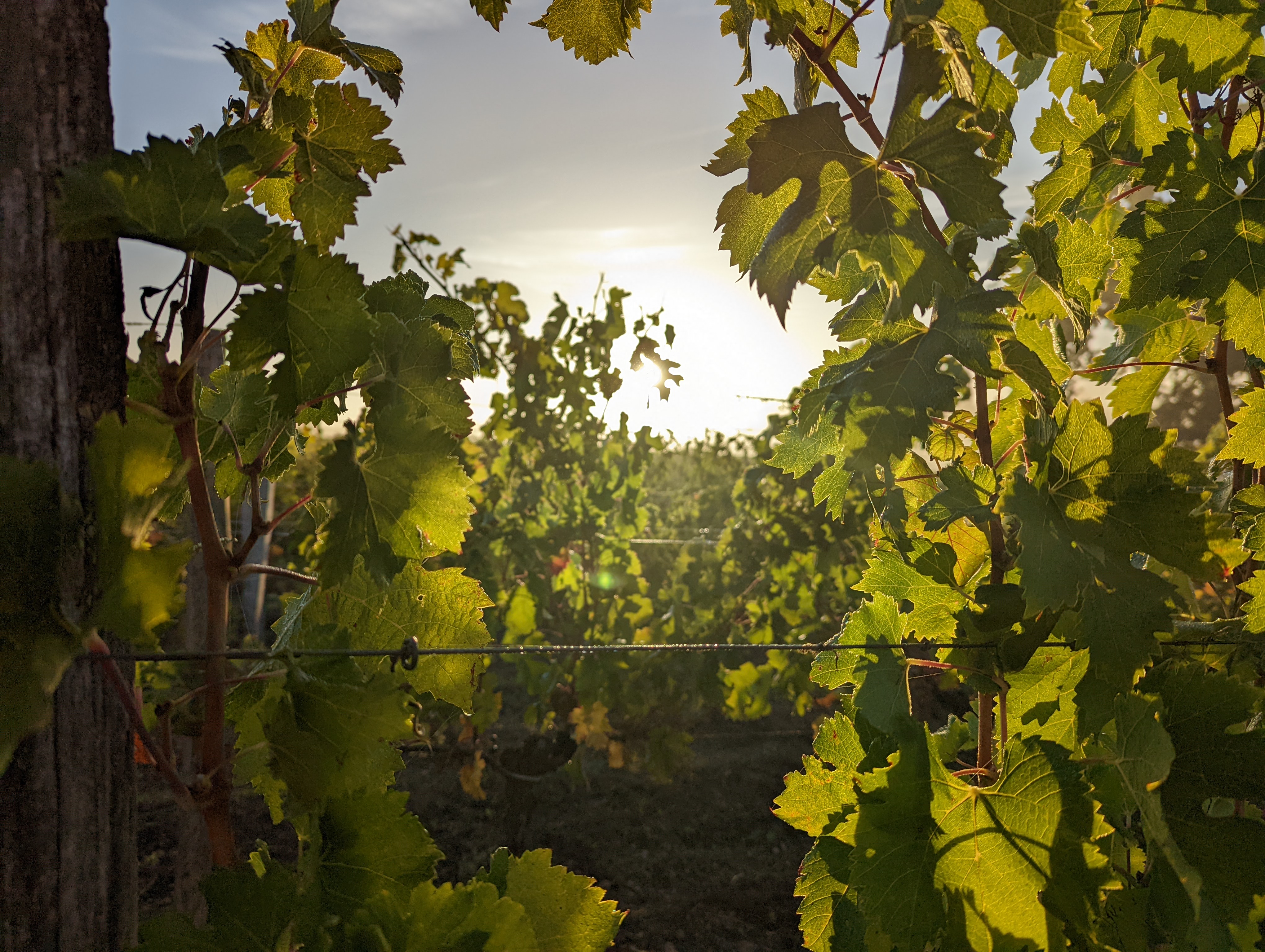The vine cycle: budburst
The cycle of the vine, in perpetual renewal, unfolds its variations over the seasons and the months. Between the spring frosts and the first warm spells, April is a particularly important month, as it sees the vine gradually regain its vigour after the long winter months and its dormant phase. Let's take a look back at this month to understand the changes that have taken place.
What is budburst?
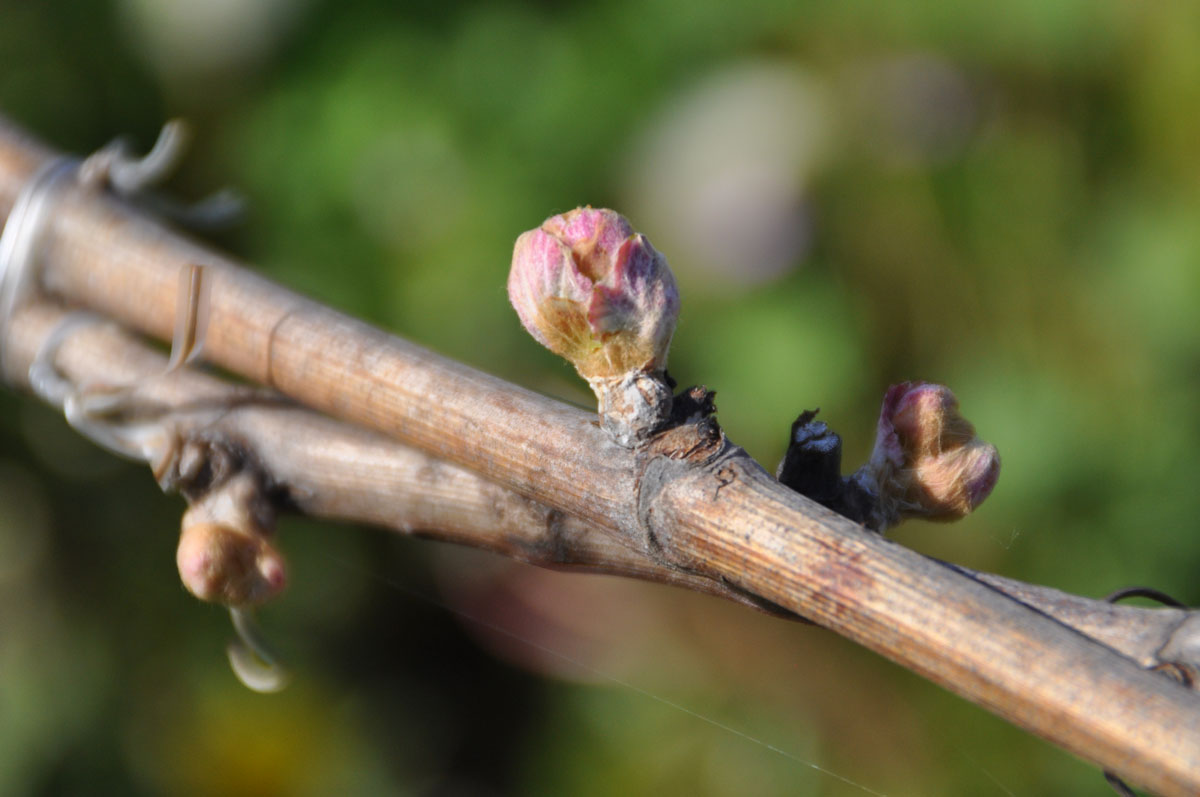
April marks the start of preparations for the next harvest and, by extension, the beginning of the story of the next vintage. The rising temperatures gradually awaken the vines, which gradually come back to life. The sap starts to circulate again in the plant, which develops: buds appear along the shoots. These gradually swell, open and split, revealing the young shoot: this is the budburst phase. This is the first sign of growth after the winter dormancy. This stage is important because it marks the start of the plant's active growth period. For this to happen, favourable conditions are needed, primarily a stable, sufficiently high temperature for a certain period of time and sufficient daily exposure to light to encourage photosynthesis.
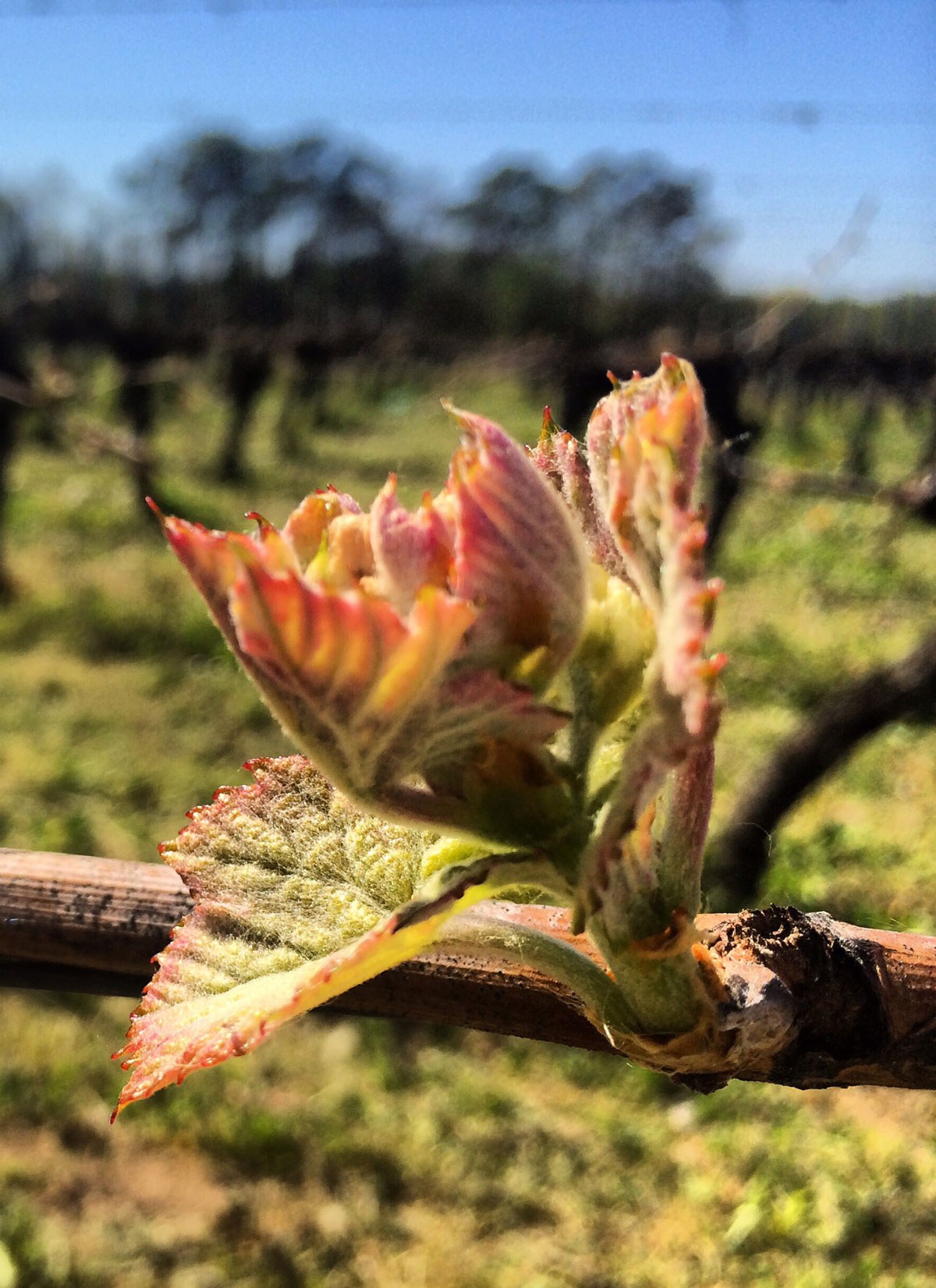
The determining factors
Budburst can be influenced by a number of factors, such as soil temperature, humidity and nutrient availability. Too low a temperature can delay budburst, while too high a temperature can speed up the process.
- Temperature: vine budburst is triggered by an accumulation of heat, generally above a certain average daily temperature, which varies according to the vine variety and local climatic conditions.
- Photosynthesis: the length of time the vines are exposed to daylight also influences budburst. In general, longer days favour budburst. That's why spring, with its longer days and generally higher temperatures, is the best season for budburst.
- Soil moisture: adequate and moderate soil moisture is necessary for the vines to bud properly. Soil that is too dry or too wet can delay budburst
- Vine varieties: some vine varieties bud more quickly than others, depending on their genetics and specific needs. Chardonnay, for example, is an early ripener, unlike Cabernet Sauvignon.
- Cultivation practices: vineyard management, in particular pruning, fertilisation and canopy management, also influence budburst. Management of the canopy (top of the vine) allows the vine to grow and develop in a balanced, robust and healthy way. They enable the winegrower to control the plant material, optimise its exposure to light and its nutritional intake, and avoid overdevelopment of the plant, which could ultimately be detrimental to the development of high-quality bunches.
Once bud-break is complete, the young shoots give rise to new leaves which develop and take on a characteristic green colour. It is during this period that the first leaves and bunches of grapes begin to form. The vine thus continues to grow and prepares for flowering, which is another important stage in the development of the grape bunches, crucial to ensuring good quality grape and wine production.
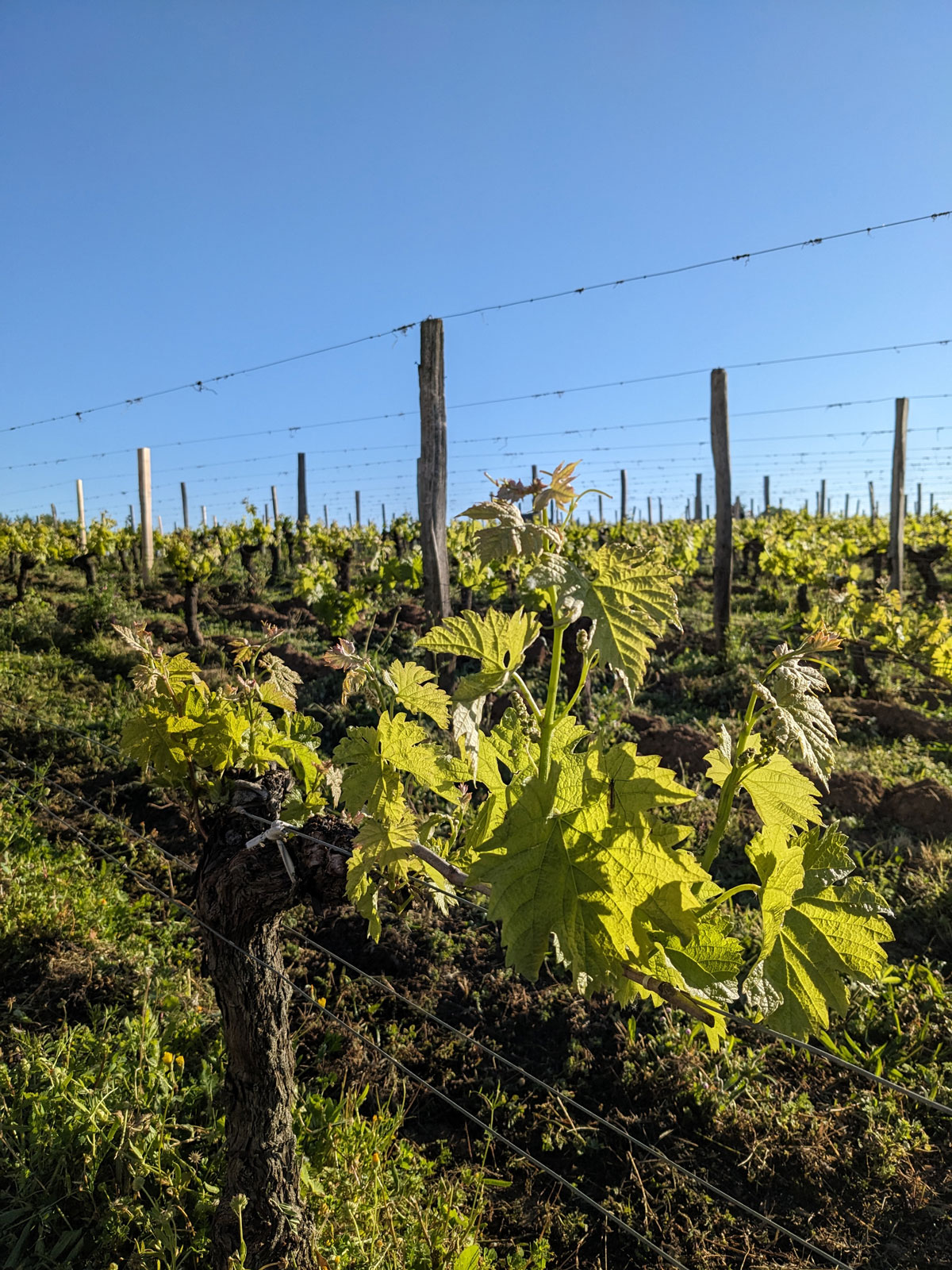
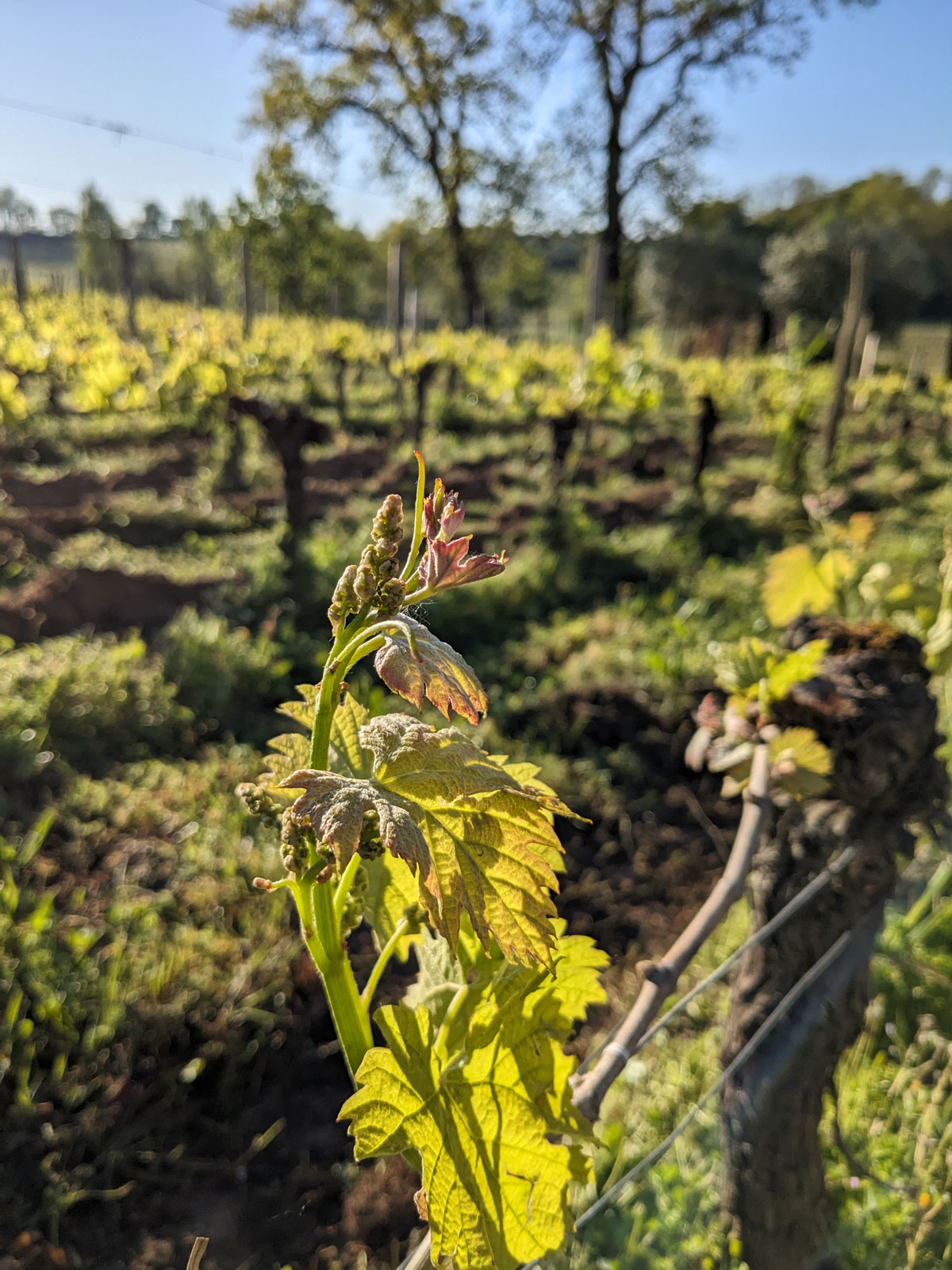
Budburst is a key stage in the vine's growth cycle. It is also a time when it is important for the winegrower to be extra vigilant about the potential dangers to which the vine is exposed.
Monitoring at all times
In April, with the budburst, the winegrower begins to monitor the vines to combat any diseases or parasites that might affect them. There are many dangers:
- Late frosts: spring frosts can damage the vine's early buds, reducing harvest yields. Spring frost is one of the main concerns of winegrowers. They take preventive measures such as installing ventilation towers, heating towers, heaters, wind turbines and even water spraying systems. These systems help to keep the temperature around the vines high enough to prevent frost damage. Constant monitoring of weather conditions is essential to anticipate potential periods of frost.
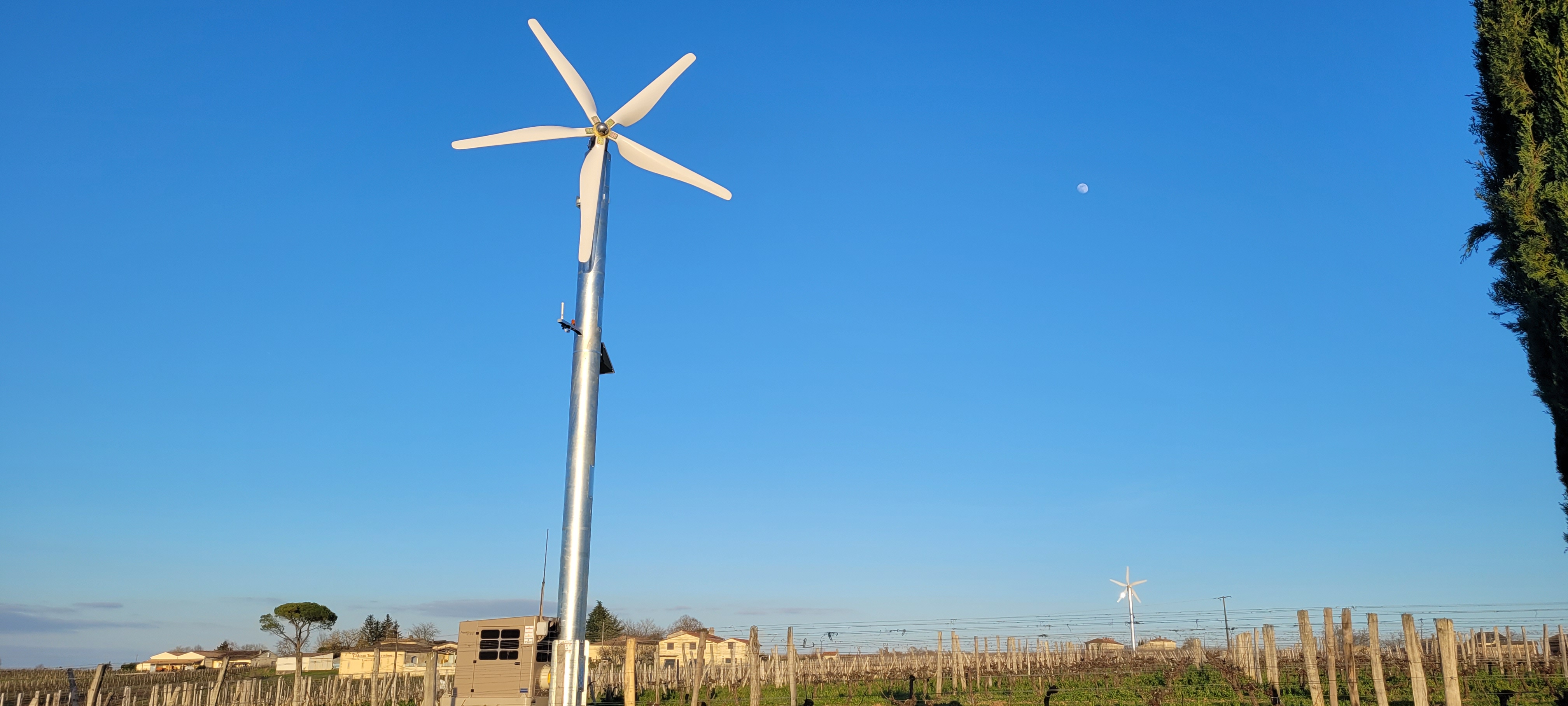
- Fungal diseases: with humidity and warmer temperatures, fungal diseases such as mildew and powdery mildew are the most feared in vineyards. They develop in wet, warm conditions, mainly in spring and summer, and can spread rapidly, threatening the health of leaves and bunches in summer. Leaves, stems and bunches can become infected, leading to brown spots and deformed leaves and bunches.
- Pest proliferation: Pests such as mites, leafhoppers and grape worms can become active in spring, causing damage to leaves and growing bunches.
- Water stress: in certain regions where rainfall is scarce in April, water stress can affect plant growth and development, potentially reducing yields.
- Bad weather: extreme weather conditions such as hailstorms can damage young shoots and developing bunches, when they are most vulnerable.
To minimise these risks, winegrowers need to take preventive measures such as applying phytosanitary treatments or organic farming alternatives, installing frost protection systems as at Château La Rose Perrière and monitoring the weather to anticipate sensitive or even dangerous conditions.
May is now here, and the vine cycle continues in the vineyard. You can almost hear the vines spreading out on either side of the double guyot vines. We'll be back with news of the vine cycle at Château La Rose Perrière in a few weeks' time....
